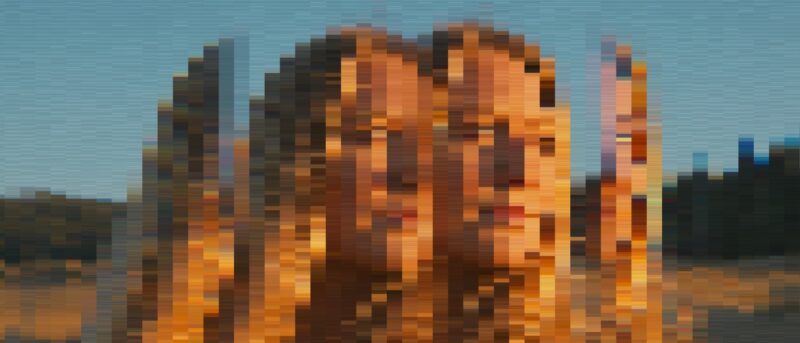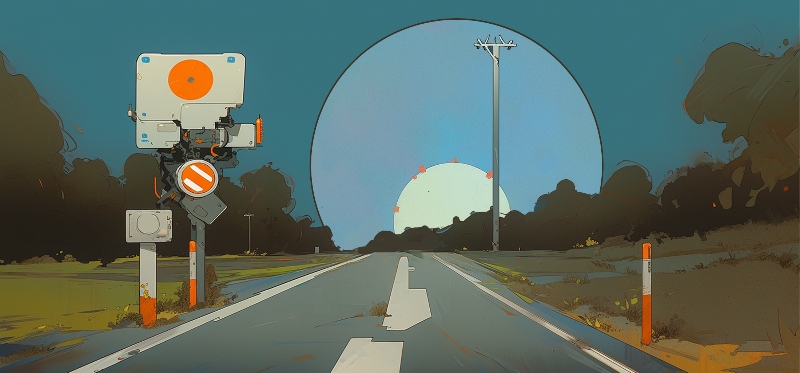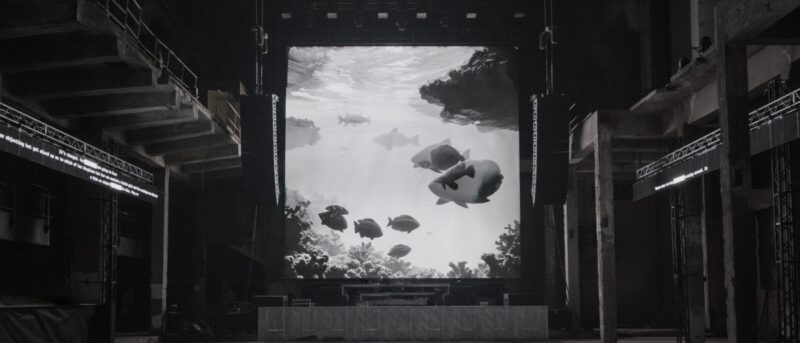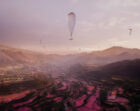
Espacio Fundación Telefónica presents 'Windows to the Future', an exhibition that includes six large audiovisual installations that invite us to imagine scenarios of futures far removed from the most conventional stereotypes of science fiction, from an optimistic and inspiring point of view
Espacio Fundación Telefónica presents 'Windows to the Future', an exhibition that includes six large audiovisual installations that invite us to imagine scenarios of futures far removed from the most conventional stereotypes of science fiction, from an optimistic and inspiring point of view
Image credits: Inferstudio. Entangled Atlas, 2024.
From six creators, the stories presented act as capsules of a time yet to come, as emissaries of futures that challenge our current perceptions and propose alternative narratives with the power to shape tomorrow from unexpected perspectives. The exhibition can be seen on the 3rd floor of the Space from 9 February to 8 September 2024. This exhibition is part of a narrative trilogy on the future that began with ‘The Great Imagination.Histories from the future’ and ‘Liam Young Building Worlds‘ both of which focus on projecting fictional scenarios and alternative worlds using technology.
Each of the six windows that open in the room becomes a space from which to project different realities, new hypotheses of futures, inviting the spectator to reconsider the way in which we think about the future and encouraging a dialogue between our present reality and those that could unfold in the coming decades. In this exercise of applied imagination, technology acts as an essential part of the artists’ creative process to materialise their visions.
The possibility of producing images generated entirely by computers (CGI) or Artificial Intelligence results in audiovisual creations that convey new narratives and visual registers. In this way, technology not only appears as a key factor in the ideation of potential futures, but also plays a decisive role in the production of the pieces. The interdisciplinary studio dedicated to prospective research and futures design has collaborated in advising the project, Invisible to accompany the artists in carrying out the conceptualisation process and the theoretical framework of each of the works.
Artists’ biographies

Paul Trillo. Multidisciplinary artist, challenging writer and director, author of experimental, conceptual and highly technical films. His diverse body of work spans genres and formats, constantly pushing the boundaries of what is possible in film. Whether he’s creating practical effects analogically, building the first mobile platform with phones, choreographing aerial smoke shows with drones or creating fully AI-animated commercials, Paul’s work always contains large injections of originality and technical innovation. His most recent work has explored the future of AI-generated cinema and the ethical and artistic implications of using these tools. His experiments with viral visual effects have changed the way these tools are used, inspiring others to explore the possibilities of this exciting new field.


GMUNK. Bradley Grosh is a prolific Berkeley-based director, designer and artist who has worked not only in motion design and animation, but also in graphic design, UI/UX, experiential design, photography, robotics, mapping, LED and more. His work includes diverse formats such as short films, music videos, motion design and digital art exhibitions, in which he explores diverse themes – the subconscious, or our relationship with technology – in unconventional ways. His work has been exhibited at auction houses such as Christie’s and Sotheby’s, and in some of the world’s most renowned art galleries. He has received prestigious awards, including the Grand Prix de Cannes 2014, in the Film Craft category.


Inferstudio. A digital design studio working in world creation, videography, visual effects and data visualisation, and collaborating with artists, architects, researchers, NGOs, film-makers, musicians and technologists to design visual worlds that help tell their stories. They also produce independent art projects, films and essays in which they address themes such as extended reality, personality and identity, and the fragility of the landscapes that make up planet Earth.


Boldtron is the artistic name of two brothers, Xavier and Daniel Cardona, Barcelona-born artists specialising in 3D, CGI, VR and AI. After working as an illustrator and art director in Europe and Asia with more than twenty years of experience in the sector, Xavi returned to Barcelona to launch his own studio, PZZZA. Boldtron’s work is based on experimentation, research and the development of new techniques. Its approach is organic and manual, although his production is purely digital. Boldtron seeks a constant creative and technological evolution by revisiting and reinventing its work, something that allows it to preserve its identity and bring something new to each creative collaboration.


Lifeforms. Design studio operating at the intersection of video games and design, focusing on the creation of virtual worlds and experiences using real-time technologies. They see games as the next step in the evolution of expressive media, and believe that the format allows for ways of seeing and telling stories that are completely unique and totally different from older media such as film or animation. They are interested in player agency in terms of exploration, environmental storytelling and ways to be creative within the game world. Lidija Kljakovic is co-founder of the game design studio Lifeforms.io. She is a designer and digital artist, working at the intersection of video games and fashion and specialising in procedural design and the creation of digital life forms. Damjan is an artist, educator and game designer. His work focuses on the exploration of play and space, in the context of Worldmaking. Damjan works as a professor of design at the Southern California Institute of Architecture (SCI-Arc).


fuse*. Founded in 2007, it is a multidisciplinary art studio that investigates the expressive possibilities of emerging technologies, with the aim of interpreting the complexity of human, social and natural phenomena. Since its origins, the studio’s research has been focused on the creation of multimedia installations and performances, produced with the aim of exploring the boundaries between different disciplines in search of new connections between light, space, sound and movement.
Led by founders Luca Camellini and Mattia Carretti, the studio has evolved over the years and now approaches the creation of new projects with an increasingly holistic approach, based on a modus operandi that values pure experimentation and collective creativity. The intention is to create works capable of inspiring, suspending the ordinary and stimulating thought, sensitivity and imagination.





